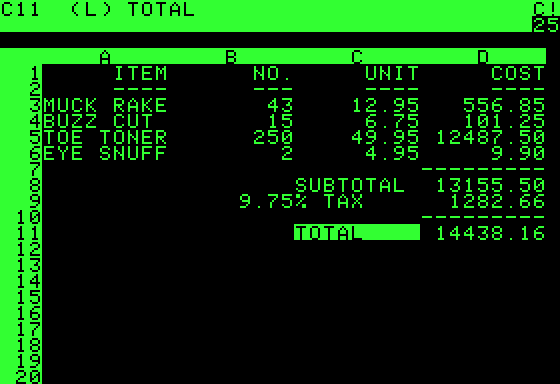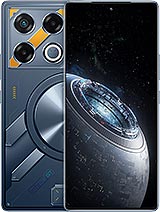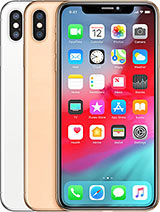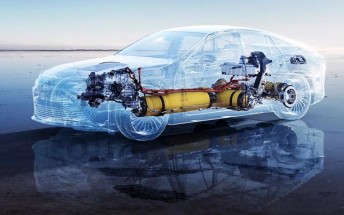A brief look at the history of Apple

Just recently, Apple unveiled its newest iPhones - the iPhone 6s and iPhone 6s Plus, and on the other hand Aaron Sorkin's and Danny Boyle's Steve Jobs, which received a thumbs up in special screenings, is set to release on October 9. So, we thought it’s the correct time to take a quick look at the company’s history, with, of course, special focus on Jobs.
The beginning
It all started back in 1976, when college drop-outs Steve Jobs and Stephen Wozniak, along with their friend Ronald Wayne established a company named Apple Computer. The association between Jobs and Wozniak, in particular, dates back to 1971, when they first met at Hewlett-Packard - where Wozniak worked - through a mutual friend.

Both of them started a business in 1972 that saw them selling a device called “blue box” which allowed users to illegally make free long-distance calls on AT&T’s network, and that too without getting traced.

“It was the magic that two teenagers could build this box for $100 worth of parts and control 100’s of billions of dollars of infrastructure in the entire telephone network in the whole world,” Jobs said later in a 1995 interview. “Experiences like that taught us the power of ideas. If we wouldn’t have made blue boxes, there would have been no Apple.”
Unsurprisingly, the device became popular, especially among criminals, with Jobs and Woz selling units for a total of $6,000. However, they gave up the venture after police started tightening the noose around them.
In 1974, Woz invited Jobs - who had just come back from a spiritual trip to India - to join the Homebrew Computer Club in Palo Alto. While initially Woz helped Jobs - who was working with Atari at time - with his office project, soon they started working on a PC. What would eventually become Apple I (shown below) was ready by 1976.

The device, which was first introduced at the Homebrew Computer Club, was essentially a DIY kit that didn’t even have a case. It was designed and hand-built by Woz, and needed a keyboard and a monitor to work as a full fledged computer.

The initial struggle
After HP and Atari showed little interest in their product, which was priced at $666.66, citing no market demand, Jobs and Woz, along with Ronald Wayne decided to set-up their own company in the Jobs’ family garage. Apple Computer soon got their first order of 50 units (for $500 each) from the Byte Shop, the only computer store chain around at the time. Despite facing financial crunch, they somehow managed to deliver that order.
Nearly a couple of weeks later, Wayne - who held 10% of the company stock - decided to end his association with the firm as he wasn’t fine with Jobs’ idea of securing huge loans to build the Apple-1 in large quantities. He was given less than $1,000 for the stake that would have been worth around $72bn today.
With Apple-1 turning out to be a successful product, Woz started working on Apple-II in the year 1976 itself. The idea was to create a pre-assembled personal computer for the general public. However, they still did not have enough money to produce it in large quantities.
The beginning of good times
Towards the end of the year 1976, ex-Intel manager named Mike Markkula invested $92,000 in the company. Subsequently, Apple Computer also secured a bank loan of $250,000, and managed to get $600,000 in venture funding - suddenly things were on the track. The company also got its logo designed in 1977.

The Apple-II computer went on sale in June 1977. Carrying a price tag of $1,295, the machine came with a plastic case, standard keyboard, tape-based storage, power supply, and color graphics.

Although it was an excellent product, its high price affected its initial sales. The situation, however, suddenly changed in 1979, when the VisiCalc app was unveiled. It was described as a “magic sheet of paper that can perform calculations and recalculations”.

The app was first released exclusively for the Apple II, giving the much required boost to the computer’s sales - people bought the machine just to run VisiCalc . The Apple-II series proved to be a roaring success for the company, which sold nearly 6 million units in the next 15 years.
In the year 1980, the company followed up Apple II with the release of Apple III, a business-oriented PC. However, the product failed, and was discontinued in 1984.

1980 was the year when Apple went public. At its IPO, shares were offered at $14 each. Within a year, the company’s value rose by a whooping 1,700 percent . “I was worth over a million dollars when I was twenty-three, and over ten million dollars when I was twenty-four, and over a hundred million dollars when I was twenty-five… And it wasn’t that important because I never did it for the money,” Jobs said in a 1996 interview.
Jobs’ Xerox visit
Apple had produced only text-based machines till now. Although both Apple-I and II were a great success, Steve Jobs was looking for something different this time around. In the year 1979, when the company was working on Lisa and Macintosh, Jobs planned a three-day visit to PARC, Xerox’s research center in Palo Alto. In exchange, the deal saw Apple giving nearly 10,000 of its shares to Xerox at $10 each.

During the trip, Jobs and team was immensely impressed by the Xerox Alto, a computer that featured a graphical user interface and came with a three-button gadget which Xerox called a mouse.

In his autobiography - which was authored by Walter Isaacson - Jobs described the revelation as “like a veil being lifted from my eyes. I could see what the future of computing was destined to be.”
Needless to say, he wanted the technology in Apple’s upcoming computers, and unsurprisingly, he had his way - teams behind both projects, Lisa and Macintosh, started working on what he saw at Xerox.
Lisa, Macintosh, and Jobs’ power struggle
Initially, Jobs got excessively involved with the project Lisa, so much so that he started bypassing the company’s management structure. This didn’t go down well with Michael Scott, who was Apple’s CEO at that time, and Jobs was officially removed from the project, as well as stripped of his R&D responsibility.
Undeterred by the development, Jobs now started focusing on the Macintosh project. However, here too, things didn’t move smoothly - project head Jeff Raskin left the program mid-way after Jobs made extensive changes to it.
Lisa was launched in 1983. Carrying a price tag of around $10,000, the computer not only had better display and memory storage, but also dedicated business applications for it.

However, it failed to catch the market’s interest. After Lisa-2 also failed, Apple stopped working on the Lisa series.
On the other hand, Macintosh - which was launched in 1984 - proved to be really successful. The machine was powered by a Motorola 68000 processor, sported a 9-inch black and white display (512 x 342 pixel resolution), and came with 128KB RAM, and a floppy drive. Priced at at $2,495, the computer ran System Software 1.0.

Macintosh became so popular that Apple managed to ship over 70,000 units within the first four months, a big deal at that time. Aside from the specs and looks, the way the machine was advertised also played a very important role on its success.
The ‘1984’ ad, which aired during the third quarter of the 1984 Superbowl XVIII championship football game (two days before the Macintosh went on sale) and indirectly targeted IBM, has topped many charts and is still considered a masterpiece.
When Jobs had to leave the company he founded
With Macintosh’s initial success, Apple was moving from strength to strength. However, the company’s top management saw a notable change. In the year 1983, Pepsi’s John Sculley agreed to join Apple as CEO. Steve Jobs had an important role in this as he convinced Sculley to join the company - he famously asked Sculley: “Do you want to sell sugared water for the rest of your life? Or do you want to come with me and change the world?”

However, little did Jobs know that Sculley would become a sad episode in his professional history.
While initially everything was smooth, situation started changing gradually. Their management styles, which were completely different, often pitted them against each other. For example, the Macintosh was initially priced at $1,995, but after Sculley’s input, the price was hiked to $2,495 just before its launch.
"Jobs basically created his own team to create his own product, the Macintosh. His team actually had its own building. He even flew the pirate flag there. He said, 'It is better to be a pirate, than to be in the navy.' He had this company-within-a-company that became pitted against other parts of the company that actually made money," said Alan Deutschman, author of "Change or Die, The Second Coming of Steve Jobs."
As Macintosh’s popularity started waning after initial success, Jobs was removed as head of the Macintosh team in 1985. With Jobs not giving up - he is said to have planned a coup against Sculley - matters soon came to head, and he was made Apple’s chairman in a bid to move him away from the company’s daily affairs.
Left with no viable option to gain back control and do what he liked, Jobs resigned from Apple in 1985 and established NeXT, a company that developed high-performance computers.
Decline in sales
Meanwhile, with the introduction of products like the LaserWriter and PageMaker, Macintosh’s sales rebounded, and Apple soon became the leader of the DTP market. However, this didn’t last long as the company saw its sales declining in 1989 primarily due to the high costs of its products and the rise of new competitors in the DTP market.
In the year 1990, Apple launched three lower cost models, including the Macintosh Classic, Macintosh LC, and Macintosh IIsi. All the three models proved to be successful.

Then came the Powerbook line of laptops, first of which was launched in 1991.

Aimed at the professional market, the laptops received many awards, especially in the 00s decade. The line was discontinued in the year 2006.
The 90s saw Apple launching several other consumer products, including digital cameras, portable CD audio players, speakers, video consoles, the eWorld online service, and TV appliances. However, none of these were successful. Aside from falling stock prices and multiple CEO replacements, Apple also saw the rise of Microsoft during this period.
The Return of Steve Jobs and good times
In the year 1996, the then CEO Gil Amelio decided to acquire NeXT as well as its NeXTSTEP operating system, a move which brought Steve Jobs back to the company he founded - has was given the role of adviser. The very next year, Jobs became the interim CEO after Amelio stepped down following Apple’s three-year poor show. The same year, the company introduced the Apple Online Store, and in 1998, the iMac was launched.

The product, which had great looks and required minimal setup, was hugely successful as the company sold almost 800,000 units in the first five months. Apple returned to profitability.
Mac OS X, iPod, and MacBook Pro
As the decade turned, Apple launched Mac OS X, something which happened in March 2001. The operating system, which was based on BSD Unix and NeXT’s OPENSTEP, was aimed to be stable, reliable, as well as secure - it was said to be virtually crash-proof.

Then in the month of October, the iconic iPod was launched. Aimed primarily at youngsters, the $399 portable digital audio player turned out to be a roaring success, with the company selling more than 100 million units in the six years that followed.

2001 was also the year when the first Apple Retail Stores were opened in California and Virginia.
A couple of years later, Apple launched its iTunes Store, which allowed users to download music at $0.99 per song. It was not only user friendly, but also had an exhaustive library of songs. Its popularity could be judged from the fact that it witnessed more than 5 billion downloads by 2008.
In 2006, Apple launched the MacBook Pro. It was the company’s second PC after iMac to feature Intel’s Core Duo processor. The debut model had a 15-inch screen. However, a 17-inch variant was also launched the very next year.

The 2003-2007 period proved to be golden for Apple, with the company’s stock price increasing over ten times.
Mobile devices and the demise of Steve Jobs
The iPod’s success had the rumor mill spinning with speculation over Apple producing a smartphone. The rumors indeed turned out to be true - in the year 2007, the company made a splash in the smartphone market with the launch of the iPhone, which came with a 3.5-inch display and metal rear casing.

The device was the first touchscreen smartphone that caught the public’s interest - its launch brought the most dramatic change to the mobile phone industry in its lifetime.

The first generation iPhone was followed by the iPhone 3G, which came in the year 2008 with a plastic back and a smaller price tag. Aside from 3G connectivity, the handset also supported GPS and third-party apps. The year also saw Apple becoming world’s third-largest mobile handset supplier.

The iPhone 3GS - where "S" stood for Speed - that came in the year 2009 was identical to the iPhone 3G in design, but brought a faster chipset, a 3MP camera and voice control.

Meanwhile Steve Jobs, who was facing health issues took a six-month medical leave of absence in 2009. "The curiosity over my personal health continues to be a distraction not only for me and my family, but everyone else at Apple as well, " said Jobs in an e-mail, explaining that it would allow the company "to focus on delivering extraordinary products."
The year 2010 saw the launch of the iPhone 4, which featured a new hardware design - it sported an stainless steel frame, while the back and front was covered in glass. The device also came with a front camera and retina display.

The year 2010 also saw the company launching its first tablet, the iPad. Priced at $499, the first generation iPad sported a 9.7-inch display.

The most recent model - dubbed iPad Pro - was made official this week along with the new iPhones, and sports a 12.9" Retina display with 5.6 million pixels.
Following the trend it started with iPhone 3GS, the iPhone 4S was launched in 2011. As expected, it was identical to its predecessor on the outside, only bringing internal improvements, notable among which was the Siri digital assistant.

Meanwhile Jobs took another break on medical grounds this year, except that this time it was for an indefinite period. He did make a brief appearance at the launch of iCloud, which happened soon after the company became the most valuable brand in the world.

Owing to his deteriorating health, Jobs resigned as the CEO of Apple in August 2011, and he died a couple of months later on October 5, marking an end of era for the company.

However, as they say, the world moves on, and so did Apple. The iPhone 5 was launched in the year 2012. It featured a revamped design and a larger 4-inch display. Powered by the Apple A6 SoC, the device sported an improved 8MP rear camera and an HD FaceTime front shooter. It also came with a new Lightning connector.

The iPhone 5 was succeeded by the iPhone 5c and its higher-end counterpart the iPhone 5s (shown below). While the former used hard-coated polycarbonate casing, the latter came with a redesigned, fingerprint sensing home button and the A7 dual-core processor, among others.

Then came the record-breaking iPhone 6 and 6 Plus smartphones, which were launched last year. While the former had a 4.7-inch, the latter sported a 5.5-inch Retina HD display. They also included support for Apple Pay.

Earlier this year, the company entered the smartwatch market with the launch of Apple Watch, which included fitness tracking and health-oriented capabilities. It is available in three versions: Apple Watch, Apple Watch Sport, and Apple Watch Edition - the latter reaching to fight premium watches from luxury Swiss makers.

Just a few days ago, the company launched the 4.7-inch iPhone 6s and the 5.5-inch iPhone 6s Plus. Both come with the A9 chip, 12MP main camera, and 3D Touch technology that allows the iOS operating system to differentiate the taps from the force presses and trigger different actions for each.

Conclusion
The story of Apple’s rise from a garage startup to the world’s most valuable brand is definitely an inspiring one. And coupled with the rise-fall-rise of Steve Jobs and his premature death, it seems straight out of a blockbuster Hollywood movie.
While it’s difficult to make do without a visionary like Steve Jobs again, we hope that Apple continues to live up to its reputation for as long as it can.
References: WikiPedia | MacWorld | Pophistorydig | Time | ABC News | Reference for Business | Today I Found Out
Image sources: PaulGraham | Ebay | Wikimedia
Related
Reader comments
- nicole
- 06 Oct 2020
- mKJ
i foud useful
- Adi
- 12 Oct 2016
- 7k6
Its Amazing I Helped Me Very Much In MY Project. Who So Ever Posted It A Thank You From My Side.
- AnonD-538418
- 17 May 2016
- 4P@
This was very beneficial to my project on Operating Systems. Thanks a lot to whoever wrote this for supplying me with the perfect information! Also, I like that you put a lot of pictures/graphics, it made it look good and colorful good job.








 Samsung
Samsung Infinix
Infinix Apple
Apple Apple
Apple Xiaomi
Xiaomi


